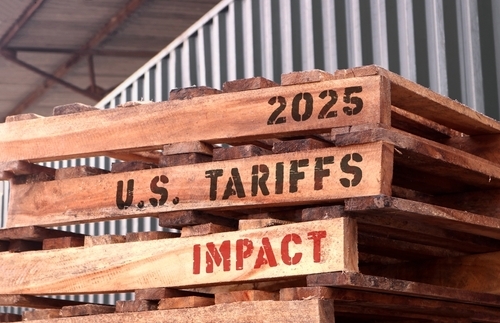Athletic apparel brand Fabletics adds call-to-action messages on product and search pages to spur shoppers to click buy.
Sometimes all shoppers need to convert is a nudge of confidence that other consumers like the product and a bit of fear-of-missing out, said Ashley Kechter, brand president at Fabletics.
Actress Kate Hudson co-founded the direct-to-consumer athletic apparel brand in 2013 as a part of TechStyle Fashion Group, which also owns JustFab, Savage X Fenty and ShoeDazzle. Fabletics has since grown to 2.9 million active customers and operates more than 100 stores in nearly 10 countries. The brand generates $850 million in annual revenue, has been profitable for the past five years and has plans for more global expansion this year.
Fabletics largely runs on a membership model, in which shoppers pay $59.95 per month and receive 20-50% off its merchandise, early access to limited-edition products, access to member-only events and other perks. In fact, 60% of members have been with Fabletics for more than two years, Kechter said. Nonmembers can still buy products from Fabletics at full price.

“We have a very loyal member base because once you understand the model, you see the value and want to stay,” Kechter said.
Fabletics boost conversion with call-to-action messaging on the product detail and search page
One way Fabletics has acquired customers or spurred its current members to purchase is with its new call-to-action message integration with Taggstar.
Taggstar uses data from Fabletics’ product catalog to denote selling information about a product, such as “selling fast,” “trending” or “popular,” among other messages. Fabletics incorporates these messages on its search results pages, product listing pages, product detail pages and cart page. At any time, hundreds of products could have a call-out message. Fabletics also can tag products it wants to emphasize with certain messages, as long as the real-time data supports the message.

In its two-week trial, conversion rate for products with the messages increased 3.19% compared with that product’s baseline, Kechter said.
Selling fast messages often convert the most shoppers as it spurs a fear-of-missing-out feeling, Kechter said. Overall, these messages work for both its loyalty program members and for first-time customers, she said.

“It’s both because either way it’s a call-to-action to purchase something,” she said. “It’s that level of direct messaging that’s working.”
After its quick proof-of-concept, Fabletics went live with Taggstar sitewide in November 2023. Now a year into the integration, Fabletics is still pleased with the results, she said.
Return on investment
Kechter said Taggstar wasn’t the cheapest social-proof messaging solution but decided to go with the vendor because the software easily integrated with its systems. Plus, Taggstar allowed Fabletics to have control over its brand voice in wording the messages, she said. While she wouldn’t reveal costs, Taggstar said that with the increased conversion, Fabletics had a 3,026% return on its investment.
Right now, Fabletics only uses these messages on its site, but it is looking to expand its use of the tool. For example, its store fitting rooms have tablets where shoppers can look up products and ask associates to bring them other sizes. If these messages were incorporated into the fitting room, they could boost in-store conversion. Fabletics also is considering allowing its influencers to know which products are trending or low stock, to then use that message in their marketing.
Influencer marketing is core to Fabletics
Fabletics works with thousands of influencers from celebrities to people with smaller followings who specialize in its different product category niches, such as men’s athletic wear or scrubs. The brand aims to hit a wide audience with its influencers and wants to cater to everyday consumers, not just hardcore athletes, she said.
“We want to be the brand for the fans,” Kechter said.
Influencer marketing has been one of its core tenants of marketing since the start, she said. Fabletics invested heavily in influencer marketing before other brands did, which Kechter said has helped fuel its rapid growth.
“We leaned into building this influencer program, UGC marketing early,” Kechter said. “From there we began our rapid growth and today we are just shy of a billion dollars.”
Constant change for retail marketers
Fabletics’ marketing strategy is constantly evolving as it adjusts to the current environment. For example, when more shoppers opted out of cookie tracking, which made targeting specific audiences challenging, it started investing heavily in performance marketing.
“That was the hurdle for any brand,” Kechter said. “So we had to work our way through that, figure out how to most effectively target in the absence of having that data.”
Similarly, Fabletics has contingency plans if TikTok goes away. Shoppers will always be consuming content, and Fabletics will have to identify where consumers will shift and then how to market in that channel, she said.
Looking ahead in 2025 and 2026, Fabletics is rolling out in new markets including Mexico, United Arab Emirates, Greece and Australia. In the next few quarters, it is launching several wholesale agreements with Costco, Von Maur, Nordstrom and Zalando and others.




